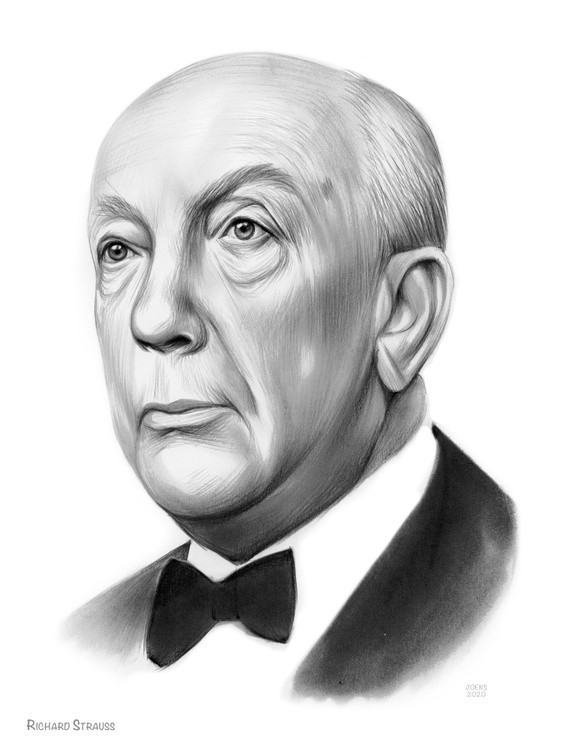Strauss 01OCT20
Richard Strauss - PencilRichard Georg Strauss 11 June 1864 – 8 September 1949 was a German composer, conductor, pianist, and violinist. Considered a leading composer of the late Romantic and early modern eras, he has been described as a successor of Richard Wagner and Franz Liszt, Along with Gustav Mahler, he represents the late flowering of German Romanticism after Wagner, in which pioneering subtleties of orchestration are combined with an advanced harmonic style. Strauss's compositional output began in 1870 when he was just six years old and lasted until his death nearly eighty years later. While his output of works encompasses nearly every type of classical compositional form, Strauss achieved his greatest success with tone poems and operas. His first tone poem to achieve wide acclaim was Don Juan, and this was followed by other lauded works of this kind, including Death and Transfiguration, Till Eulenspiegel's Merry Pranks, Also sprach Zarathustra, Don Quixote, Ein Heldenleben, Symphonia Domestica, and An Alpine Symphony. His first opera to achieve international fame was Salome which used a libretto by Hedwig Lachmann that was a German translation of the French play Salomé by Oscar Wilde. This was followed by several critically acclaimed operas with librettist Hugo von Hofmannsthal: Elektra, Der Rosenkavalier, Ariadne auf Naxos, Die Frau ohne Schatten, Die ägyptische Helena, and Arabella. His last operas, Daphne, Friedenstag, Die Liebe der Danae and Capriccio used libretti written by Joseph Gregor, the Viennese theatre historian. Other well-known works by Strauss include two symphonies, lieder (especially the Four Last Songs), the Violin Concerto in D minor, the Horn Concerto No. 1, Horn Concerto No. 2, his Oboe Concerto and other instrumental works such as Metamorphosen. Source: Wikipedia




